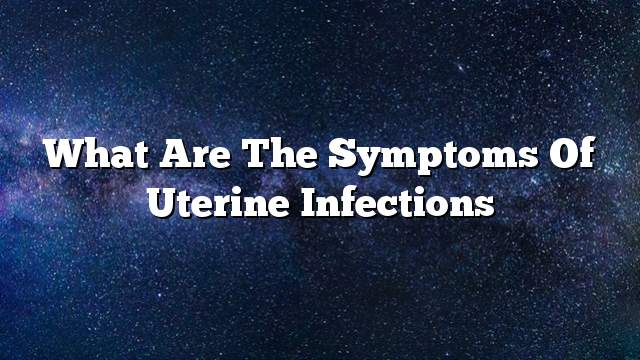uterus
The uterus is part of the reproductive system of the female body. The uterus is located between the rectum and the bladder in the pelvic area. It is composed of three layers: the inner lining or endometrium, the middle muscle (Myometrium) and the outer layer (Perimetrium) ). The uterus is linked to the fallopian tubes, the cervix, and the cervix through the vagina.
Each month, the ovary produces an egg that passes through the fallopian tube to the uterus. If the egg is fertilized by sperm, the fertilized egg is implanted in the wall or lining of the uterus. Pregnancy occurs. The uterus feeds the fetus until the time of birth. The lining of the uterus is removed in the form of menstrual blood. For the middle muscle layer, it helps the birth process by pushing the child from the uterus through the cervix and vagina.
Endometritis
Endometritis means inflammation of the uterine part of the uterus caused by infection of the uterus, which can be Chlamydia, Tuberculosis, Gonorrhea, They are normally found in the vagina. Endometriosis usually occurs after abortion or birth, especially after long birth or after caesarean delivery. There is a risk of endometriosis resulting from pelvic operations through the cervix, such as a dilation and curettage, a biopsy of the lining of the uterus or the result of the IUD.
Inflammation may not be confined to the inner layer of the uterus. Inflammation may affect the middle muscle layer. In some cases, it may reach the outer layer of the uterus, which is not a life-threatening disease but must be treated. If untreated, it can produce complications of female genitalia. Can affect reproductive capacity, as well as its overall health impact.
Endometriosis symptoms
Symptoms that can appear on the patient in the case of endometriosis include the following:
Diagnosis of endometriosis
Diagnosis of endometriosis usually depends on the clinical symptoms that appear and suffer from the patient, such as fever or lower abdominal pain. The doctor also performs a clinical examination and pelvic examination. The abdomen, uterus, and cervix are examined for any pain, discharge or other signs. (Erythrocyte Sedimentation Rate), where endometritis leads to a rise in white blood cell count and an increase in the rate of blood deposition. The doctor takes a swab of neck The uterus to detect any bacteria may cause the infection of the lining of the uterus infection, in addition to the possibility of taking a biopsy from the endometrium, the doctor may resort to the work of laparoscopy of the abdomen and pelvis, and examination of secretions under the microscope.
Treatment of endometriosis
Endometriosis is treated by taking the appropriate antibiotic. The partner in the conjugal relationship should also take antibiotics if a sexually transmitted disease is detected. Care must be taken to end the treatment prescribed by the doctor in full. If the condition is difficult and complicated As in postpartum cases, the doctor may seek to provide the patient with intravenous fluid with comfort in the hospital.
Potential complications
Women may suffer complications from endometriosis, especially if the infection is not treated by taking antibiotics. In this case, women may have the following complications:
- Infertility.
- Pelvic peritonitis, which means pelvic inflammation due to infection.
- Pus and abscess are collected in the pelvis or uterus.
- Septicemia, which is the presence of bacteria in the blood. It is important to note that septicemia can lead to sepsis or sepsis, which means that the blood is infected with a severe infection that develops rapidly, resulting in septic shock. (Septic Shock), which is very low in blood pressure, is an emergency that threatens the patient’s life, so it requires rapid treatment.
Tips to avoid endometriosis
The risk of endometriosis at birth can be reduced or because of the women’s procedures that women may need by making sure that the instruments used by the doctor are sterile during childbirth or during an operation. The doctor can also prescribe a preventive antibiotic during a caesarean section or before Initiate any surgery.
Women can reduce the chance of sexually transmitted infections that can cause endometritis by safely using a condom, for example by using a condom. Routine screening should also be used to help with early diagnosis if there is injury Of sexually transmitted disease, whether to women or to the partner, and in the case of sexually transmitted disease must be careful to end the treatment described in full, and should not neglect the emergence of any symptoms of infection endometriosis to prevent the aggravation of the problem and the emergence of any potential complications from infection.
